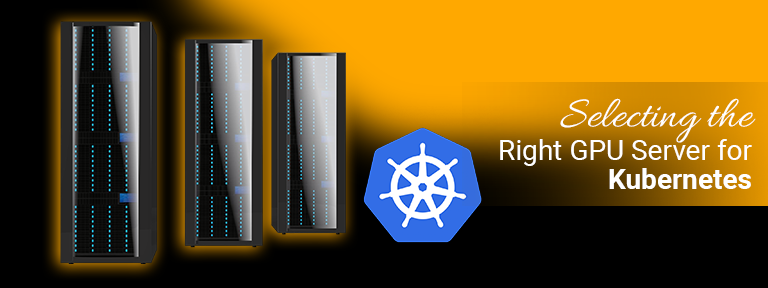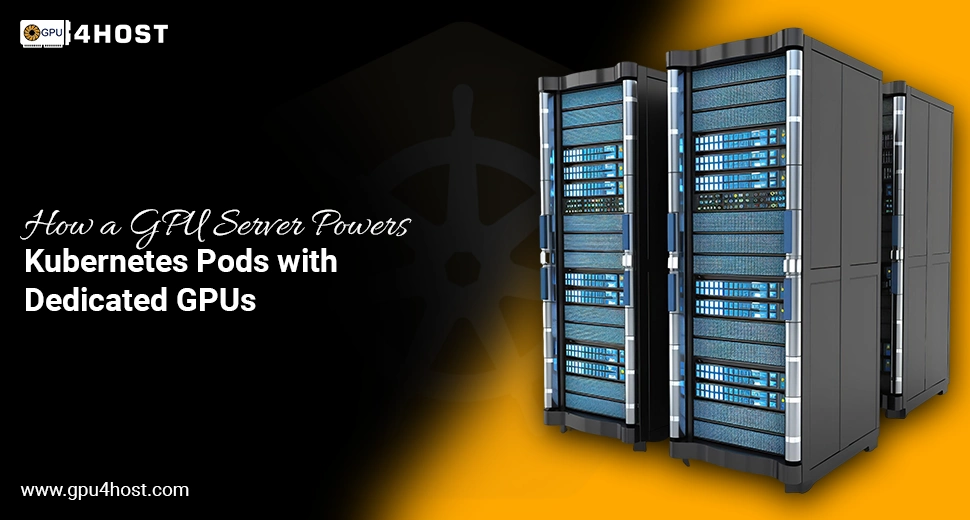How a GPU Server Powers Kubernetes Pods with Dedicated GPUs
Today, nearly all companies, whether large or small, are swiftly transitioning to robust infrastructures that support flexible GPU tasks in an era marked by advancements in AI, machine learning, and resource-intensive applications such as AI image generators. One of the best solutions among others is the rapid deployment of GPUs, especially for Kubernetes pods—a practical and efficient method for managing and running GPU-based workloads in a containerized environment.
This guide covers how a GPU server works within Kubernetes pods, the significance of maintaining a dedicated GPU server setup, and how companies like GPU4HOST can assist you in unlocking the complete potential of AI GPUs to meet your everyday task requirements.
A Brief Introduction to GPU Server
A GPU server basically refers to a high-performance computing (HPC) machine well-fortified with one or more graphics processing units (GPUs), engineered specifically to manage parallel processing workloads that CPUs struggle a lot with. These servers are necessary for artificial intelligence, machine learning, deep learning, 3D graphic rendering, and big data analytics.
In the case of Kubernetes environments, utilizing a GPU server helps pods to easily access hardware acceleration for compute-heavy tasks like:
- AI-based model training
- AI-powered image generation
- High-quality video rendering
- Complex simulations
With Kubernetes handling your infrastructure, a GPU dedicated server can be successfully sliced into pods, every single one having isolated, efficient GPU access.
Why Go for Dedicated GPUs in Kubernetes Pods?
- Enhanced Performance for AI-Based Tasks: From AI image generators to deep networks, AI tasks require low latency and high computing power, optimally provided by a dedicated GPU server.
- Task Isolation: Each pod can be allocated a specific amount of GPU assets, ensuring consistent performance.
- Effective Resource Utilization: Beyond standard VM setups, Kubernetes enables more efficient GPU sharing when supported by the necessary hardware.
- Scalability: As the demand for your tasks grows, you can effortlessly scale horizontally across multiple GPU servers within a single GPU cluster.
How GPU Allocation Works in Kubernetes

To simply run GPU tasks in Kubernetes, you just want some compatible nodes (that is, a GPU server) with GPUs such as the NVIDIA V100 and NVIDIA A100, the latest drivers, and Kubernetes device plugins.
Complete Overview:
- Provision GPU Nodes:
Utilize a cutting-edge GPU server or multiple servers to develop a node pool. Some service providers, like GPU4HOST, provide a quickly deployed GPU dedicated server enhanced for Kubernetes.
- Install the Latest NVIDIA Drivers:
Kubernetes needs NVIDIA GPU drivers on all nodes. All these installed drivers interface with the NVIDIA device plugin for Kubernetes, letting Kubernetes acknowledge GPU resources.
- Deploy NVIDIA Device Plugin:
Deploy the certified plugin with Helm or a YAML manifest. This helps Kubernetes to easily schedule pods that request GPU assets.
- Request GPUs in Pod Specs:
In your pod.yaml, if you want more GPUs, then you can request them like this:
resources:
limits:
nvidia.com/gpu: 1
This setup tells Kubernetes to allocate 1 GPU to this specific pod, sourced from your GPU server.
- Schedule & Run:
Kubernetes utilizes its scheduler to get a correct node (with an accessible GPU) and deploys the pod according to that.
Selecting the Right GPU Server for Kubernetes

Not every GPU server is the same. For Kubernetes addition, you want a GPU server that generally supports virtualization, containerization, and productive driver support.
Suggested Specifications:
- Support for quick GPU passthrough
- Network: 10 Gbps or more for different tasks
- GPU Type: NVIDIA A100 or A40
- Memory: 64 GB+ RAM
- Storage: NVMe SSDs for quick input/output
GPU4HOST provides a huge variety of GPU hosting solutions customized for containerized settings. Even if you are running an AI GPU cluster or any other, dedicated solutions guarantee high performance and security.
Real-World Use Cases for Dedicated GPU Pods
- AI Image Generators:
These tasks are generally resource-heavy and benefit notably from isolated GPU assets. Rapidly deploying them in Kubernetes pods guarantees auto-scaling and failover management.
- ML-Based Pipelines:
Train complex models with the help of PyTorch or TensorFlow with pod-powered scheduling on a GPU cluster.
- Video Rendering and Transcoding:
Allocating GPU-powered workloads to different pods for performing parallel processing and quicker turnaround.
- Scientific Simulations:
Genomics, climate modeling, and physics simulations require raw compute power, offered productively by a GPU dedicated server.
Pros & Cons of Kubernetes + GPU Server Setup
| Pros | Cons |
| Successful resource distribution. | Needs cutting-edge configuration. |
| Auto-scaling with all GPU pods. | Higher maintenance costs for a GPU server. |
| Fault handling. | Not every GPU card is fully compatible with Kubernetes. |
| Allow for a multi-node GPU cluster. | Needs to be monitored for GPU usage manually. |
Scaling GPU Resources: GPU Cluster Tactic
As your demand increases, you can easily connect many GPU servers into a single GPU cluster. Kubernetes supports this with the help of:
- Node Pools: Group all GPU nodes individually.
- Taints & Tolerations: Schedule only GPU-based workloads to a GPU node.
- Horizontal Pod Autoscaling: Spin up more GPU pods at the time of heavy tasks.
This tactic guarantees high use of resources without overloading.
Best Practices
- Utilize node selectors or affinity guidelines to control where all GPU pods are scheduled.
- Check GPU utilization using different tools such as NVIDIA DCGM or Prometheus + Grafana.
- Use container-powered GPU frameworks such as KubeFlow or TensorFlow Serving.
Why GPU4HOST?
GPU4HOST is an expert in the field of GPU hosting services that flawlessly support advanced Kubernetes infrastructure. Even if you want a single GPU server or a complete GPU cluster, GPU4HOST provides:
- Cutting-edge GPU dedicated server.
- Support for NVIDIA A100 and some other AI-level GPUs
- 10 Gbps speed for reduced latency
- Quick provisioning and Kubernetes-powered setups
With the help of complete root access and flexible setups, GPU4HOST is one of the best options for all scientists, developers, and organizations developing AI at scale.
Conclusion
Running dedicated GPUs specifically for Kubernetes pods is a complete game-changer for organizations opting to power next-generation AI apps. With the help of correct GPU server infrastructure, such as the service offerings from GPU4HOST, you get full agility, flexibility, and raw performance, all managed with the potential of Kubernetes.
If your AI-based image generator, machine learning pipeline, or scientific model demands robust compute power, pairing Kubernetes with GPU hosting is not only a smart move—it’s a must.


